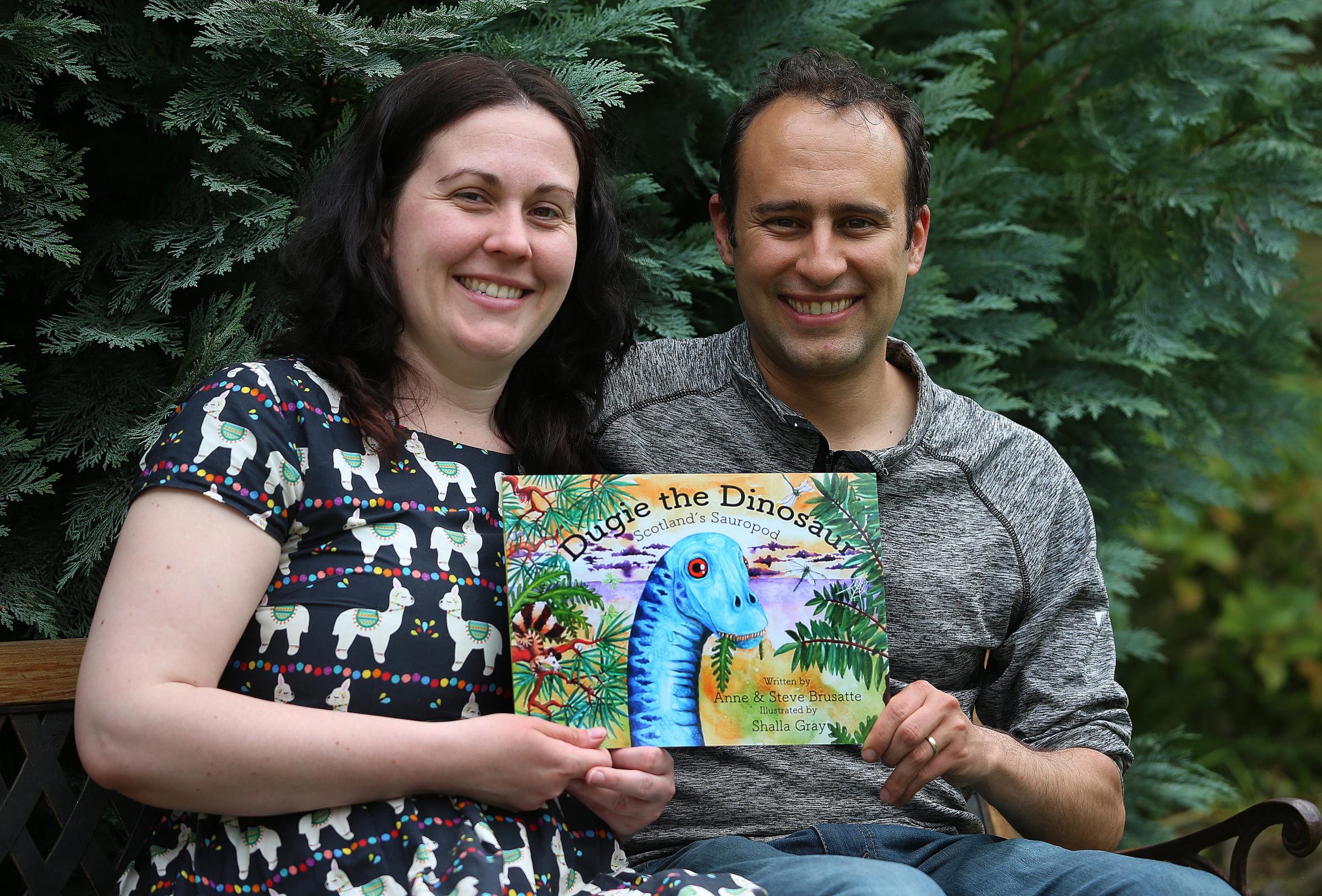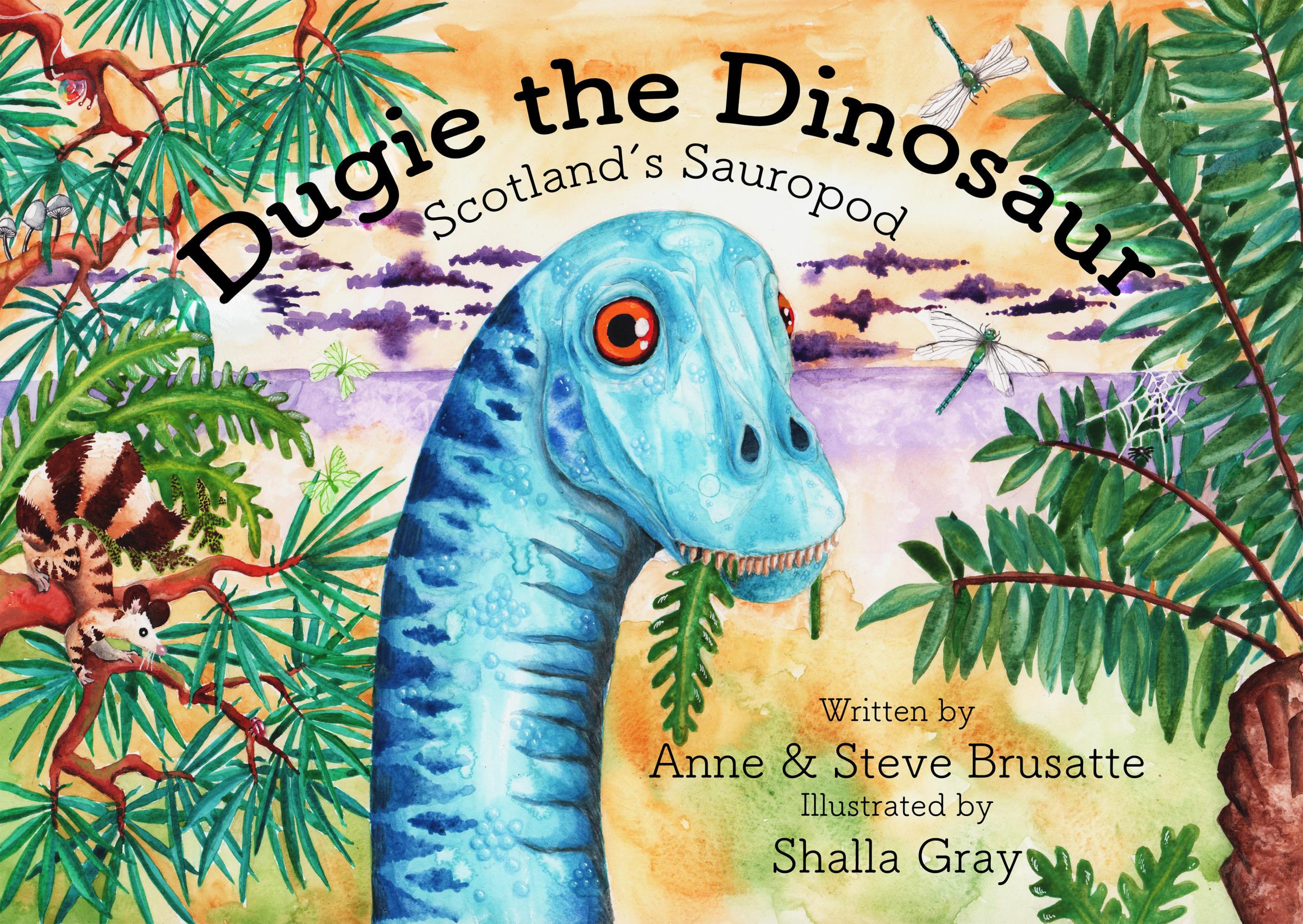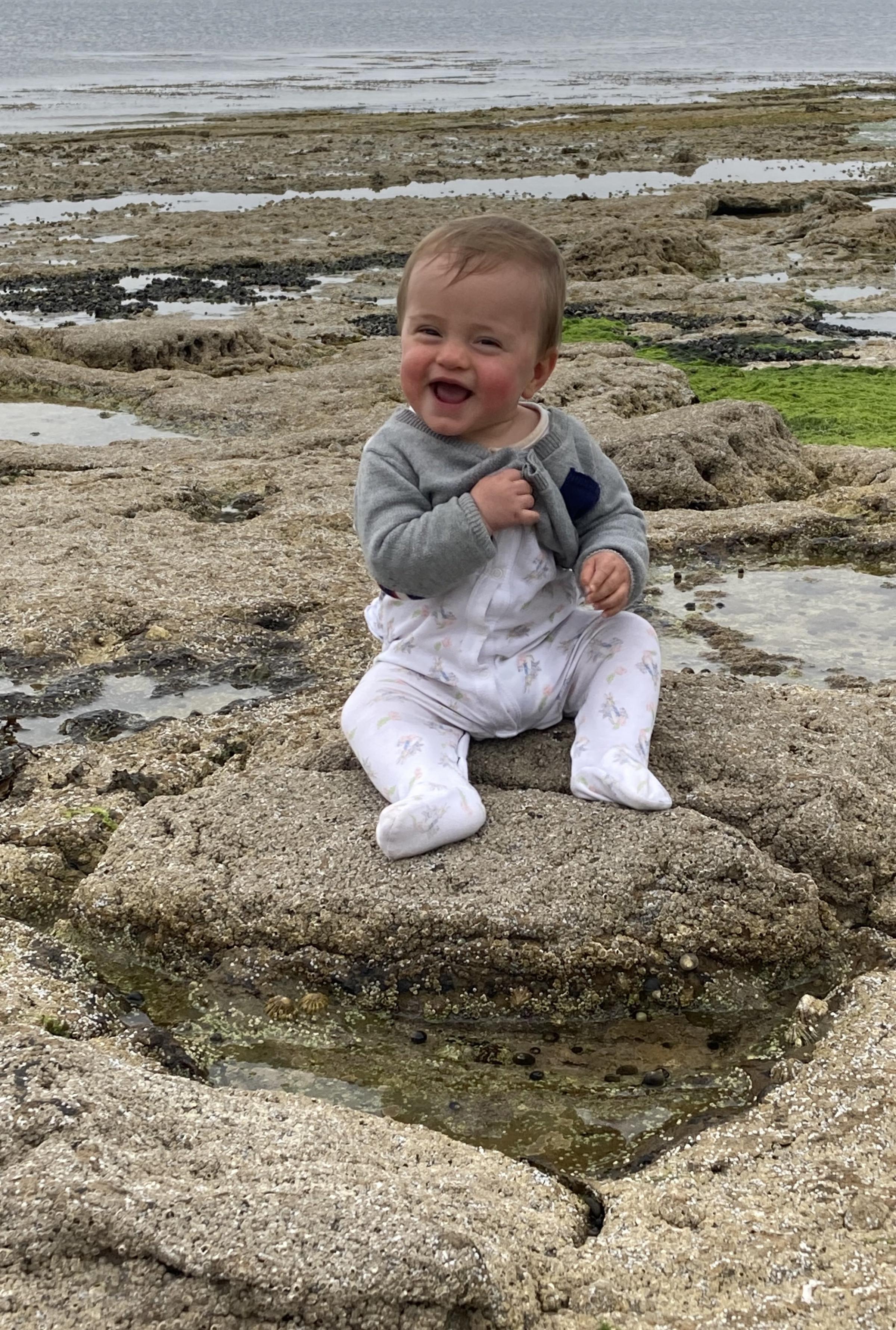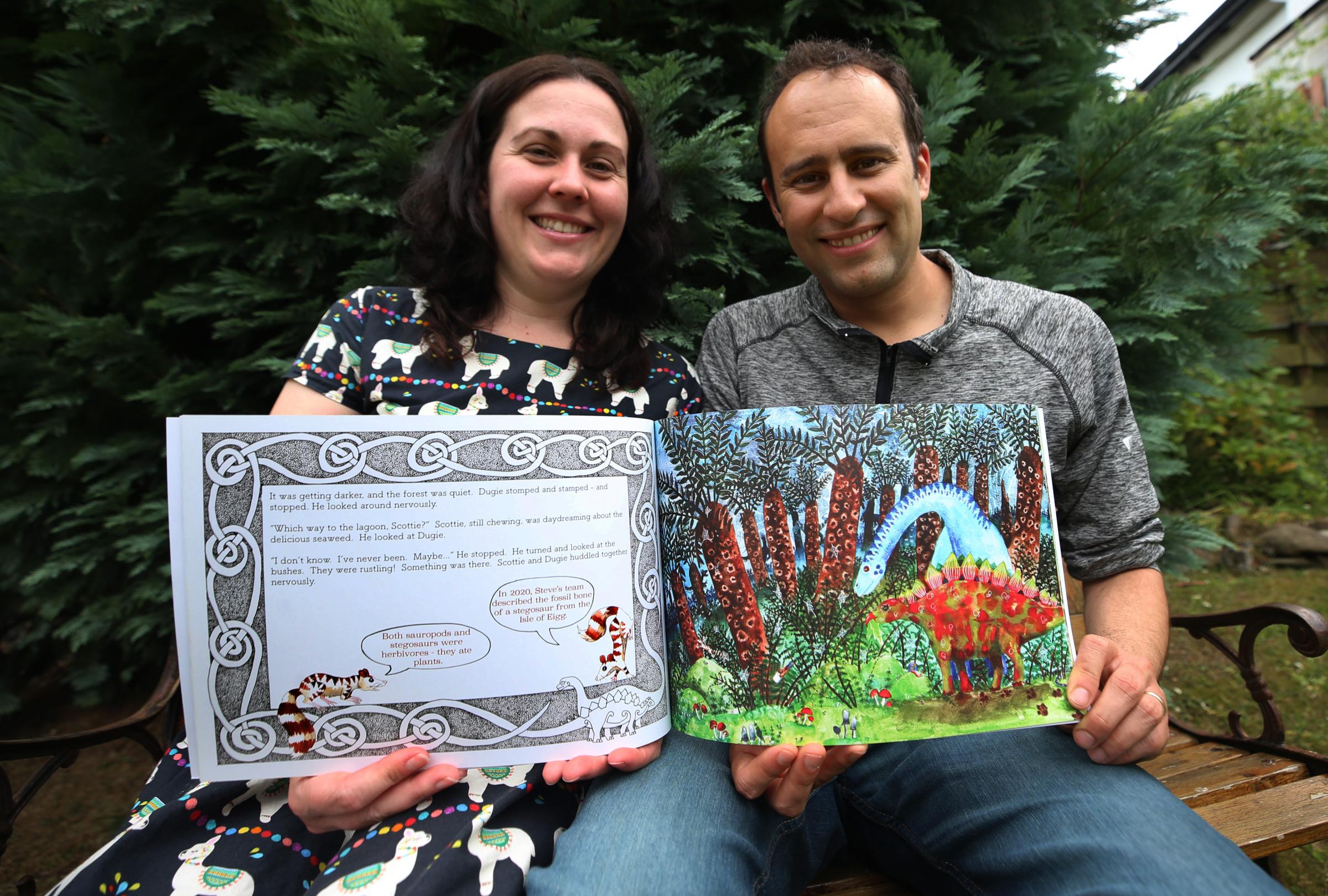
AS a primary teacher married to the dinosaur expert who advised on the new Jurassic World blockbuster, it became blindingly obvious to Anne Brusatte that there was no children’s book about the astonishing creatures that once roamed Scotland.
To rectify this, Anne and her husband, Steve, whose team from Edinburgh University have made many important dinosaur discoveries in Scotland, have just published the first one.
“Our motivation for doing this was to bring Scottish dinosaurs to people in Scotland, especially to young people because there has never been a book on Scottish dinosaurs before,” said Steve.
“When I visit schools and when Anne was teaching, we found it was really unusual for children to know there were dinosaurs in Scotland – even kids that were obsessed with them and could rattle off all the names and could spell tyrannosaurus.
“I found that to be quite a shame so hopefully this book will introduce the Scottish dinosaurs to young people and show them you can find real ones right here in Scotland.”
Dugie The Dinosaur, Scotland’s Sauropod, is based on discoveries that Steve and his team have made on Skye, the “Dinosaur Isle”.
The impetus to write the book came during a family trip to the island ten months after the birth of son, Anthony, who was photographed sitting in a giant fossilised footprint of a sauropod. The new book is dedicated to Anthony “who sat in Dugie’s footsteps before his first birthday”.
“It’s a picture book and a fictional story but all the creatures really lived in Scotland,” said Anne.
“In the story, Dugie is a young sauropod that lives with his family in the lagoons on Skye. Separated from the herd in a storm and trying to find his way home, he meets a stegosaur and a pterodactyl, but they are chased by scary raptors on the way.”

Dugie the dinosaur is actually called after Dugald Ross, who founded and runs the Staffin Dinosaur Museum on Skye.
“He is a good friend and colleague and the man on the ground who has brought Scottish fossils to the world so we wanted to honour him by naming the title character after him,” said Steve.
It was in 2015 that Steve and his team discovered a site on Skye with over 100 hand and footprints that sauropods had left behind.
“They are the ones with the long necks, tiny heads and big bellies, with arms and legs that looked like Greek columns and they lived on Scotland 170 million years ago,” said Steve. “They were about the size of three elephants and the biggest thing that we know of that lived until that point in time.”
A few years ago his team also discovered the foot and handprints of a stegosaur, the dinosaurs with plates on their backs. The team then discovered a stegosaur’s leg bone on nearby Eigg.
There is a stegosaur called Scotty in the book and a pterodactyl called Maggie. “Pterodactyls are flying reptiles rather than dinosaurs but we learned recently they also lived in Scotland and we bring that into the story,” said Steve.
“We have taken the dinosaurs and fossils my team have discovered and woven them into this fictional story that hopefully can engage kids. It is a cute little story but the dinosaurs are all real and ones that really lived here. The way they looked, the way they moved, the food they ate, the way they behaved and the environment they lived in, we know from actual fossils so parents, librarians and teachers don’t have to worry – this book is completely accurate.”

Anne added: “Children are naturally drawn to dinosaurs. There is a magic about them and it is even more magical when you tell them there were dinosaurs that lived right here.”
FOR Steve, a real dinosaur enthusiast, the book is another way to share his vast knowledge with the public, as was his role as palaeontology adviser on the recently released Jurassic World Dominion.
“It was a lot of fun,” said Steve. “It’s really surreal working with Hollywood people but I just love bringing the knowledge of dinosaurs to the public in whatever way I can. I treasure those opportunities and there is no opportunity that is grander and more able to reach a large amount of people around the world than a summer blockbuster film.
“I spent a couple of years being on call when the director, writers and artists were developing the story, characters and designs. They would pepper me with questions and gave me drafts of their artwork and asked for feedback. I felt it was my responsibility to make sure the real science, the real fossils and what we really know about dinosaurs were always in the ears of the creative geniuses that were making the film.
“And it was really rewarding. There are a lot of new dinosaurs in the film including some that have only been discovered in the last few years. There are feathers on some of the dinosaurs for the first time ever in the Jurassic film series so I am very pleased with how it has turned out.”

BRUSATTE pointed out that much more had been learned about dinosaurs since the first film in the series came out 29 years ago.
“We know from fossils that only started to be found in the mid 90s that a lot of dinosaurs did have feathers and some of them had wings, so that is incorporated in new film. It is more accurate, more realistic and there is a larger cast of characters which I think is pretty cool.”
Dugie The Dinosaur, Scotland’s Sauropod, by Anne and Steve Brusatte and illustrated by Shalla Gray, is published by Wigtownshire-based Curly Tale Books, priced £9.99







